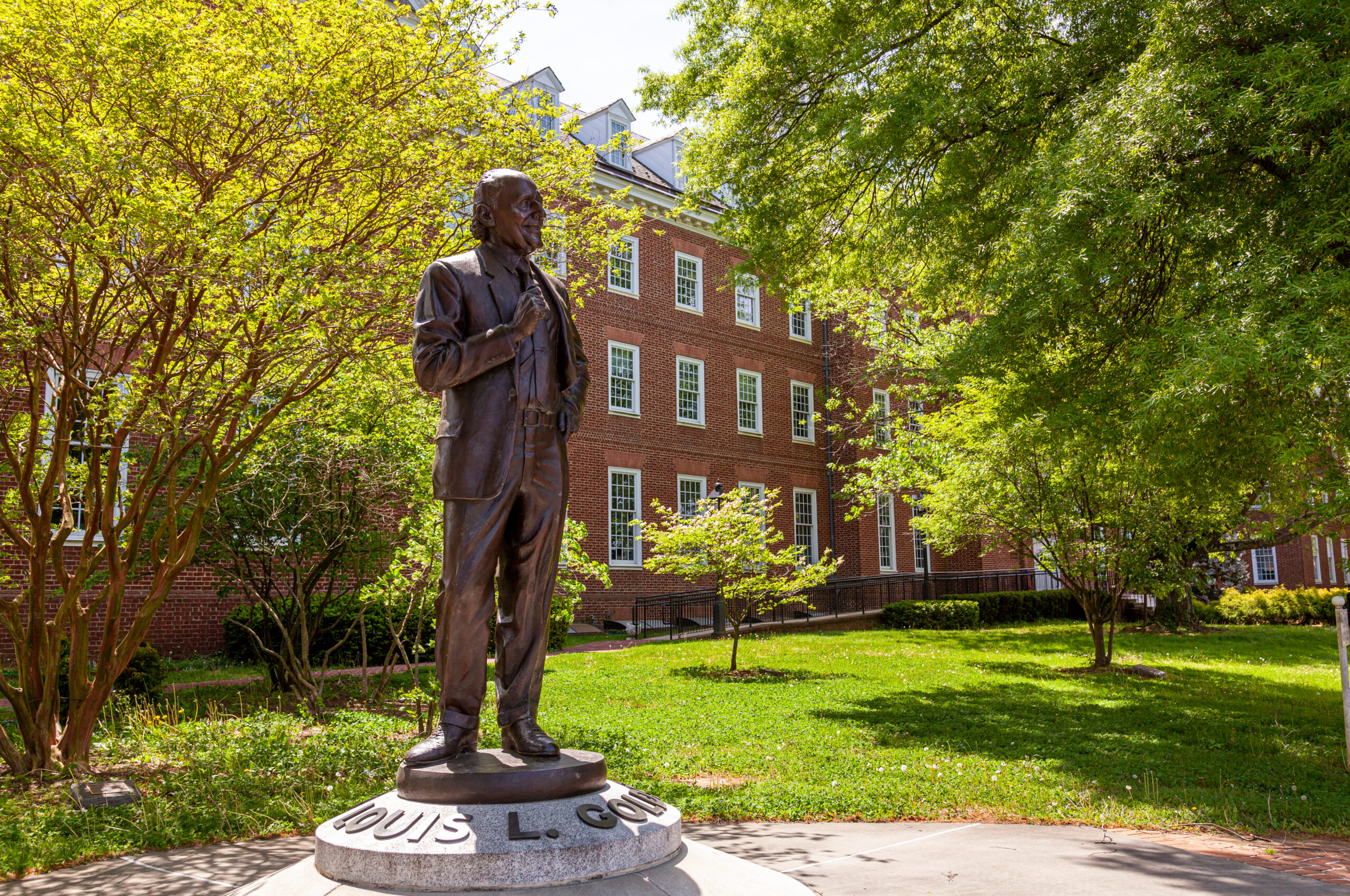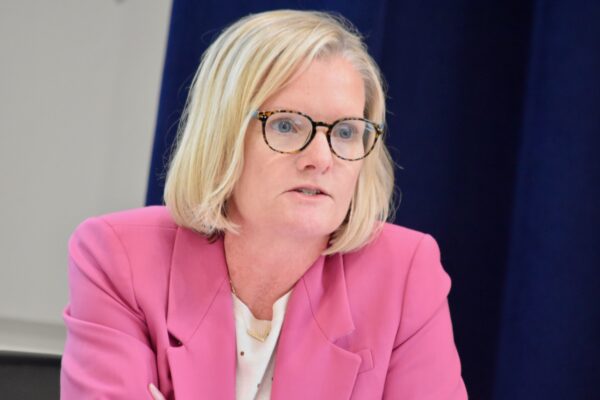Panel recommends 45% increase to state borrowing in coming year


Maryland Budget Secretary Helene Grady. File photo by Bryan P. Sears.
A key state fiscal panel approved a sharp increase in state borrowing for the next year as fiscal leaders look for ways to offset a projected structural deficit while improving schools and aging buildings and infrastructure.
The recommended $500 million increase over anticipated levels comes as Gov. Wes Moore (D) and others express concerns about the state’s fiscal future. It also represents a potential reduction of cash once intended for capital projects.
State Budget Secretary Helene Grady said the additional borrowing would help offset projected structural deficits and limit drastic changes to the current capital spending plan.
The state’s Board of Revenue estimates decreased state revenue estimates in March and September.
That means less cash on hand to pay for projects as they come up.
“Knowing that we cannot rely on PAYGO funds at this point, the alternative to increasing [general obligation] debt would be to significantly reduce the capital program which we view as neither smart nor feasible,” Grady said.
State agencies have requested more than $15 billion in projects for the coming five-year period, Grady said.
“This figure does not even include the requests flowing in from local governments and other organizations, much of which we are not likely to have the capacity to fund given the cash projections,” she said.
Instead, Grady said the state will focus on reducing the backlog of deferred maintenance and upgrades for state facilities. She cited a recent report from Moody’s that found the state is eighth among states in depreciated facilities — a key measurement of aging.
Additionally, Grady said the state must continue to pump money into improving school facilities and making investments to increase economic competitiveness.
“Again, it is critical that we maintain a strong capital program, take care of our assets, and support economic growth,” she said.
The increase in the recommendation sought by Grady, and unanimously approved by the committee controlled by appointees of Moore is not binding on the governor nor the legislature.
Over the last eight years, former Gov. Larry Hogan (R) faced repeated criticisms from Democratic lawmakers for limiting borrowing. Hogan said freezing the state’s credit card was necessary because of an over-reliance on borrowing during the Great Recession that resulted in ballooning debt payments.
Last December, the legislative Joint Spending Affordability Committee rejected a proposal to limit borrowing to $600 million and combine it with cash that was part of a historic surplus driven by federal pandemic aid. Instead, the panel controlled by Democrats approved more than $1.25 billion for the current fiscal year.
That same plan included about $2 billion in cash for capital projects between fiscal 2025 and 2028.
As recommended Monday by the Capital Debt Affordability Committee, the state contemplates borrowing $1.75 billion in each of the next five budget years.
The new recommendations call for nearly $8.8 billion in borrowing over the next five fiscal years — an increase of 30% over the same period as envisioned by the legislature in December.
The roughly $2 billion in cash for fiscal 2025-2028 anticipated in that December legislative plan could be used to plug projected structural budget deficits.
Moore warned county leaders in August of looming budget reckoning.
By September, the Board of Revenue Estimates projected a widening of the state’s structural budget gap — the annual difference between spending growth and anticipated revenues.
Those estimates do not include ramifications of a possible recession nor a potential mid-November federal budget battle and accompanying government shutdown.
Any of those events could have an adverse effect on the state budget.
Rebecca Ruff, director of debt management for the Maryland State Treasurer, said the increases requested by Grady remain within state guidelines.
State guidelines limit borrowing to 4% of personal income. Debt service payments should not exceed 8% of total tax collections.
As a result of the increased spending, outstanding debt as a percentage of personal income hovers below 3%. Debt service as a percentage of total revenue is slightly more than 6%.
Ruff, who analyzed the request, told the committee “it is affordable because the way we issue our debt is based on capitalized interest.”
The borrowed money comes with a cost down the road. Debt payments from the state’s general fund would remain at or below $500 million through fiscal 2028.
In fiscal 2029, those payments increase to $550 million and grow annually to nearly $800 million by fiscal 2033, according to an analysis presented by Ruff.
The recommendation adopted by the committee may not go far enough for lawmakers.
Del. Mark Chang (D-Anne Arundel) said the joint Spending Affordability Committee may look to increase the proposal as “it does not leave enough room” for local bond initiatives.
“So, while I support CDAC’s recommendation today, as a coequal branch of government this is something that the Spending Affordability Committee has been looking at as far as setting the final number,” said Chang, who is chair of the House Appropriations Capital Budget subcommittee and a member of the Spending Affordability Committee.




 Creative Commons Attribution
Creative Commons Attribution